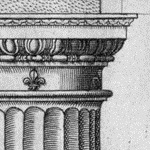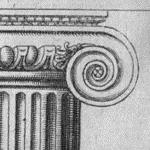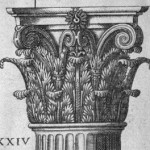C
- Canon
- Member of the clergy who was at the service of the church. In Besançon, the canons lived near Saint John’s Cathedral and officiated at services at both Saint John’s and Saint Stephen’s.
- “Coursière”
- In Besançon homes, this was a long balcony added after construction of the home was finished. It gave access to an apartment which, following interior changes, was no longer connected to the flights of the staircase giving onto the courtyard.
L
- Loggia
- A room with one or more sides open to the outside.
M
- Market area
- Urban area or neighbourhood which developed, from the 10th century on, near a hub of power or wealth; it was neither religious nor military in nature.
- Mason’s mark
- A mark made by the mason who cut the stone or piece before setting it.
O
- Orders
- The three Greek orders for columns. There are three types of capitals: Doric, Ionic and Corinthian. When all three orders are used on one facade (as at Granvelle Palace), the Doric order, which is the heaviest, was used on the ground floor; next came the Ionic and finally, the Corinthian.
Doric

Ionic

Corinthian

[Image source: © Centre d’Études Supérieures de la Renaissance – Tours, Vignola, Giacomo Barozzi da Règles des cinq ordres d’architecture de Vignolle (1632)]
P
- Président à Mortier
- Under the Ancien Régime, this man had a powerful judicial position under the authority of the first president. The “mortier” (similar to a mortar board) was the black velvet hat that the judge wore.
R
- Relic
- The bodily remains of men or women who were venerated as saints, or the objects that they had touched which became holy. In the Middle Ages, relics were venerated because it was thought that saints were sources of miracles and were the intercessors between mortals and God.
S
- Stucco
- With a lime or plaster base, it made a good imitation of marble. It was used for decors and for decorative sculptures.
T
- Tower house
- Part of the medieval landscape: a tall stone house, whose foundation did not take up much space; it was only for residential use. Its conspicuous height was a sign that its owners were very important (knights or high church officials).
–>